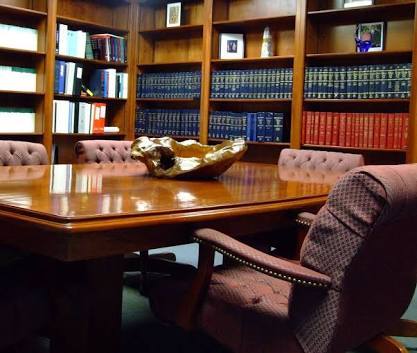Global Issues
Negligence; An Examination Of The Extent Of Liability For Damages And When Can A Damage Be Said To Be Too Remote -By Oyetola Muyiwa Atoyebi & Prince Igoh
This Article has given us a brief run-through on what Negligence is, as well as the extent to which a damage could be too remote and finally, possible defences to an allegation of negligence.

INTRODUCTION
Negligence is a two-edged sword that swings both ways, but more viciously in the direction of that person who carries the burden of duty of service, or holds a responsibility to another person to act in a particular way.
This article will help draw a fine line on how remote the damage done to a person can be, to make the curator of that damage liable to the other person. It discusses the duty of care using the celebrated case of Donoghue and Stevenson[1], and also highlights the possible defenses a Defendant can raise to exonerate himself wholly or partly from liability. In addition, it will relate this concept to our everyday lives as well as our professional lives, and how we carry out our businesses in relation to our clients.
WHAT IS NEGLIGENCE?
Generally, Lawyers will define negligence as the breach of an owed legal duty of care owed by a person known as the Defendant, which results in damage to another person known as the Plaintiff. The following paragraph provides an illustration of this ideal.
- Let us take for example, a Gardener is employed by a homeowner who has a big fine garden.
- The Gardener is instructed by the homeowner to trim the bushes and flowers every day.
- The homeowner travels out of town and the Gardener stops trimming the bushes and flowers, after all, the homeowner travelled.
- The bushes grew so tall that a snake was able to find its way into the bedroom of the homeowner.
- The Gardener was informed that the homeowner was returning from his trip the following day and rushes to clear all the bushes and trim the flowers.
- The homeowner returns and is bitten by the snake.
At a close observation, you would ask the following questions:
- Where was the duty of care?
- When was the duty of care breached?
- What damage was caused as a breach of the duty of care?
To answer the preceding questions, one would have to conclude from the preceding illustration that:
- The Gardener owed the homeowner the duty of care to clear the bushes and trim the flowers.
- The failure of the Gardener to clear the bushes and trim the flowers during the period the homeowner travelled amounted to a breach of the duty of care.
- The access the snake had to the bedroom of the homeowner was occasioned by the failure of the gardener to clear the bushes and trim the flowers, which consequently led to the homeowner being bitten by the snake.
In a more holistic approach, the ingredients of the tort of negligence are:
- A legal duty owed to the victim by the curator of the damage to exercise care within the scope of his duty;
- the breach of the said duty; and
- the consequential damage or Injury caused to the victim.
The most important among the three is the breach of duty of care owed to the victim of the damage, and the question of whether or not the curator of the damage, in a particular case, is liable to the victim for negligence depends on the extent of the duty of care owed.It all boils down to the proximity between the parties concerned to determine who bares the liability for negligence.
Lord Atkins established in the English case of Donoghue v. Stevenson, the manner in which the proximity that would create legal duty[2]may be determined:
“…The rule that you are to love your neighbour, becomes, in law, you must not injure your neighbour. Who, then, in law is my neighbour? The answer seems to be persons Who are so closely and directly affected by my act that I ought reasonably to have them in contemplation as being so affected when I am directing my mind to the acts or omissions which are called in question.”[3]
REMOTENESS OF THE DAMAGE.
Under this subheading, we would discuss the principle of causation. In fact, where we would consider the “BUT FOR” test to properly explain the principle of Remoteness of damage.
CAUSATION IN FACT
This deals with the question of whether it is a fact that for the action or inaction of the Defendant, he breached his duty of care and the injury has occurred. The Court has over time applied the “BUT FOR” test.
This test applies in the sense that it asks the question that, a car accident would not have happened but for the action or inaction of the driver either driving above the speed limit or failing to apply the brakes when necessary.
In the celebrated case of Barnett and Chelsea and Kensington Hospital Management Committee[4], the Victim’s husband took tea and afterwards complained of vomiting for 3 hours, and later in the night he went to the hospital where the nurse on duty consulted the Doctor on the telephone. The Doctor informed the Victim to go and consult his own Doctor the next morning. The Victim’s husband later on the same day died of arsenical poisoning. In an action for negligence brought against the hospital for the act of its servant, it was held that in failing to examine the deceased, the Doctor was guilty of breach of duty of care, but this duty was, however, held not to be the cause of the death. This breach was not held to be the cause of the death because even if the deceased was examined, it could have been impossible to save his life. Thus, it could not be said that:
“…but for the Doctor’s negligence, the deceased would have lived”
Remoteness of damage arises only after concluding the question in fact. The importance of concession in law is to avoid the situation where the Defendant is liable ad infinitum; for all the consequences of the wrongful act or omission.
An event which occurs independently after a breach of duty which contributes to the Plaintiff’s damage may break the chain of causation, so as to make the Defendant not liable to any damage that occurs beyond this point.
Now, the starting point of any rule of the Remoteness of damage is the familiar idea that a line must be drawn somewhere. It would be unacceptably harsh for every Defendant to be responsible for all the consequences which he has caused[5].
Certainly, the question of where to draw the line on remoteness of damage cannot be answered by a mathematically precise formula. Judges have used their discretion from time to time, and in that process, two formulas have been highlighted:
- The test of reasonable foresight; and
- The test of directness.
THE TEST OF REASONABLE FORESIGHT
If the consequences of a wrongful act could be foreseen by a reasonable man, then they are not too remote. If on the other hand, a reasonable man could not have foreseen the consequences, then they are too remote. This means an individual shall be liable only for the consequences which are not too remote i.e. which could be foreseen.
THE TEST OF DIRECTNESS
According to the test of directness, it simply means, a person is liable for all the direct consequences of his wrongful act, whether he could foresee them or not; because consequences which directly follow a wrongful act are not too remote.
We cannot effectively discuss this topic without mentioning and explaining what defences are open to a person who negligence has been alleged against. Therefore, we are going to talk about the three major defences to an allegation of negligence as I have outlined below.
DEFENSES TO NEGLIGENCE
There are three major defenses to a claim of negligence:
- Inexistence of duty of care.
- Volenti non fit injuria (Consent).
- Contributory negligence.
- INEXISTENCE OF DUTY OF CARE
There is a Latin maxim that says ‘nemo dat quod non habeat’ which means, you cannot give what you do not have. Now tell me, can a Medical Doctor owe a duty to passengers on an aircraft to get them to their destination? The answer is NO, owing to the fact that he has no business flying an aircraft.
Now, who owes those passengers on that aircraft a duty of care? the answer is; The Pilot of that aircraft the passengers boarded.
If one can prove that he owes no duty of care to a Defendant in a claim for negligence using the above scenario of a Medical Doctor and a pilot, it can completely exonerate him.
- VOLENTI NON FIT INJURIA (CONSENT)
The implication of this defence is that the Plaintiff consented to the action or inaction that amounted to the damage suffered by him, this defence goes to completely exonerate the Defendant from liability of the injury caused. Due to pressure from the economy, some people take on risky employment. Such a person will not succeed in an action when the Defendant raises the defence of volenti non fit injuria as a consequence of their employment.
In Morris v. Murray[6], the Plaintiff went for a ride in a private plane piloted by the Defendant, despite the fact that he knew that the Defendant was drunk. The plane crashed and the Plaintiff was injured. It was held that the pilot’s drunkenness was so extreme and obvious that participating in the flight was like engaging in a dangerous occupation. Defence of volenti non fit injuria succeeded.
Nevertheless, this does not completely alienate the duty an employer owes to an employee notwithstanding the risks attached to the job.
In the wordsof Lord Wrights in the case ofNorth-western Utilities Ltd v London Guarantee and Accident Co. Ltd[7]:
“The degree of care which the duty involves must be proportioned to the degree of risk involved if the duty of care should not be fulfilled.”
In the classic case of Paris V. Stepney Borough Council[8] the Court simplified the extent to which an employer owes a duty of care to his employee:
In this case, a Company employed a man as a Mechanic in their maintenance department. Although they knew that he had only one good eye, they did not provide him with goggles for his work. While he was attempting to remove a part from underneath a vehicle, a piece of metal flew into his good eye and he was blinded. The Court agreed with the Mechanic that the company had been negligent in not providing this particular workman with goggles, since they must have been aware of the gravity of the consequences if he were to suffer an injury to his one good eye.
Though the defence of Volenti non fit injuria(Consent) ordinarily can go all the way to exonerate the Company from liability of negligence, the Company must also have been able to prove that they provided all the necessary work accessories to protect the mechanic from impending harm.
On the other hand, Contributory negligence can go to exonerate a Defendant partly but not wholly from a claim of negligence on his part.
- CONTRIBUTORY NEGLIGENCE
This can occasion in a circumstance where the Defendant falls below the expected duty of care to his neighbor, but the neighbor as well has failed to take measures to protect himself from accidents that may occur. In the case of Evans v.S.B. Bakare[9], According to the trial judge’s findings and acceptance of the evidence, the victim was riding his motorbike carelessly when it veered into the road and struck the other party’s car. The trial judge incorrectly applied the contributory negligence rule despite the fact that the victim was solely to blame for the mishap. Nevertheless, the Court of appeal overturned this.
CONCLUSION
This Article has given us a brief run-through on what Negligence is, as well as the extent to which a damage could be too remote and finally, possible defences to an allegation of negligence.
Consequently, whatever damage occasioned by an act or omission of a man who cannot reasonably foresee the damage, it is said to be too remote and the man cannot be held liable for such an act or omission. Therefore, if the consequences of a wrongful act could be foreseen by a reasonable man, then they are not too remote and a man can then be said to be liable.
SNIPPET
Negligence has three fundamental ingredients, which are:
- The existence of a duty of care.
- The breach of the duty of care.
- The damage that occurred as a result of the breach of that duty of care.
Keywords:
Negligence, Duty of Care, Remoteness of Damage, Acts Omissions, Volenti Non Fit Injuria, Tort Law, Neighbour
AUTHOR: Oyetola Muyiwa Atoyebi, SAN
Mr Oyetola Muyiwa Atoyebi, SAN is the Managing Partner of O. M. Atoyebi, S.A.N & Partners (OMAPLEX Law Firm).
Mr. Atoyebi has expertise in and vast knowledge of Litigation Practice and this has seen him advise and represent his vast clientele in a myriad of high-level transactions. He holds the honour of being the youngest lawyer in Nigeria’s history to be conferred with the rank of Senior Advocate of Nigeria.
He can be reached at atoyebi@omaplex.com.ng
CONTRIBUTOR: Prince Igoh
Princeis a member of the Dispute Resolution Team at OMAPLEX Law Firm. He also holds commendable legal expertise in Litigation Practice
He can be reached at prince.igoh@omaplex.com.ng
[1](1932) AC 562
[2]ibid
[3](2021) 10 NWLR (P. 482, para. D)
[4](1969) 1QB 429
[5] ‘Remoteness of Damages – Law of Tort’ (2019) 1(1) Toppr<https://www.toppr.com/guides/legal-aptitude/law-of-torts/remoteness-of-damages-law-of-tort/> Accessed 3 March 2023
[6](1990) 3 All ER 801
[7](1936) A 108 at P. 126.
[8](1951) AC 367
[9] (1974) NWLR 78




















